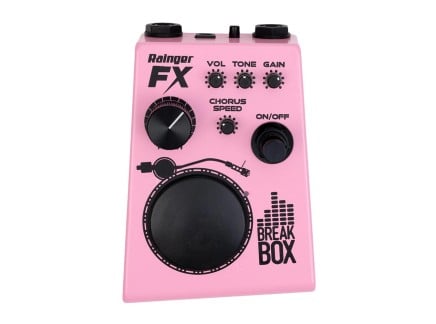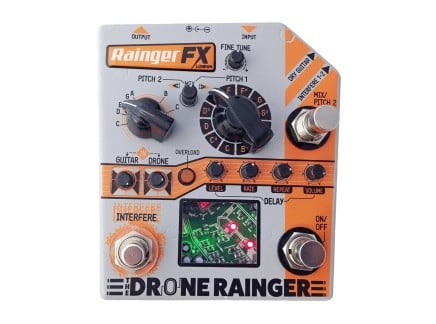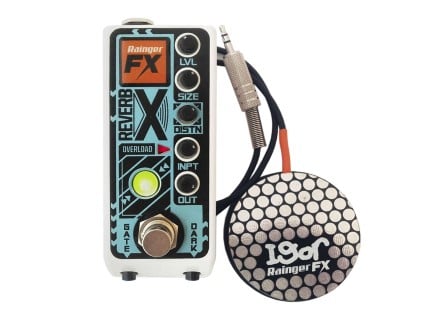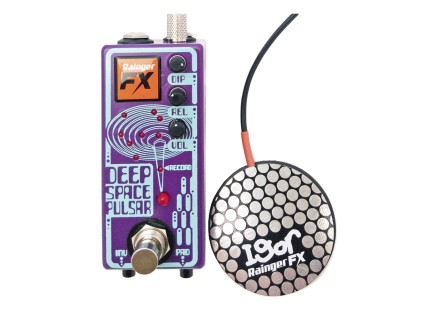We've seen no shortage of inventive effects pedals over the last several years, whether in offering unique effects processing techniques or combining classic and favorite effects in new, creative ways. Rarely is there a brand adept at both, but that's exactly what Rainger FX happens to do with each and every one of their products. With their new Break Box pedal, Rainger FX is calling back to the rock and metal stylings of the late 90s and early 2000s. And with the pad-triggered vinyl scratch effect, you don't even need to track down a turntablist friend to play along with you!
If you're as intrigued by the Break Box as we are, be sure to watch the video above, where Wes pairs it up with Bastl's Softpop II. And keep reading this article if you're interested in some of Rainger FX's history, and how the earliest groundwork for the Break Box was laid down years ago.
A Brief History of Rainger FX
Without all of the extra frills, Break Box is really just a super-charged distortion pedal at its core, with roots that can be traced back to the very beginning of Rainger FX. Ever since the very first Rainger pedal was released, their far-out aesthetics and affinity for wild and searing sounds helped them stand out from an increasingly-packed crowd of boutique pedal builders.
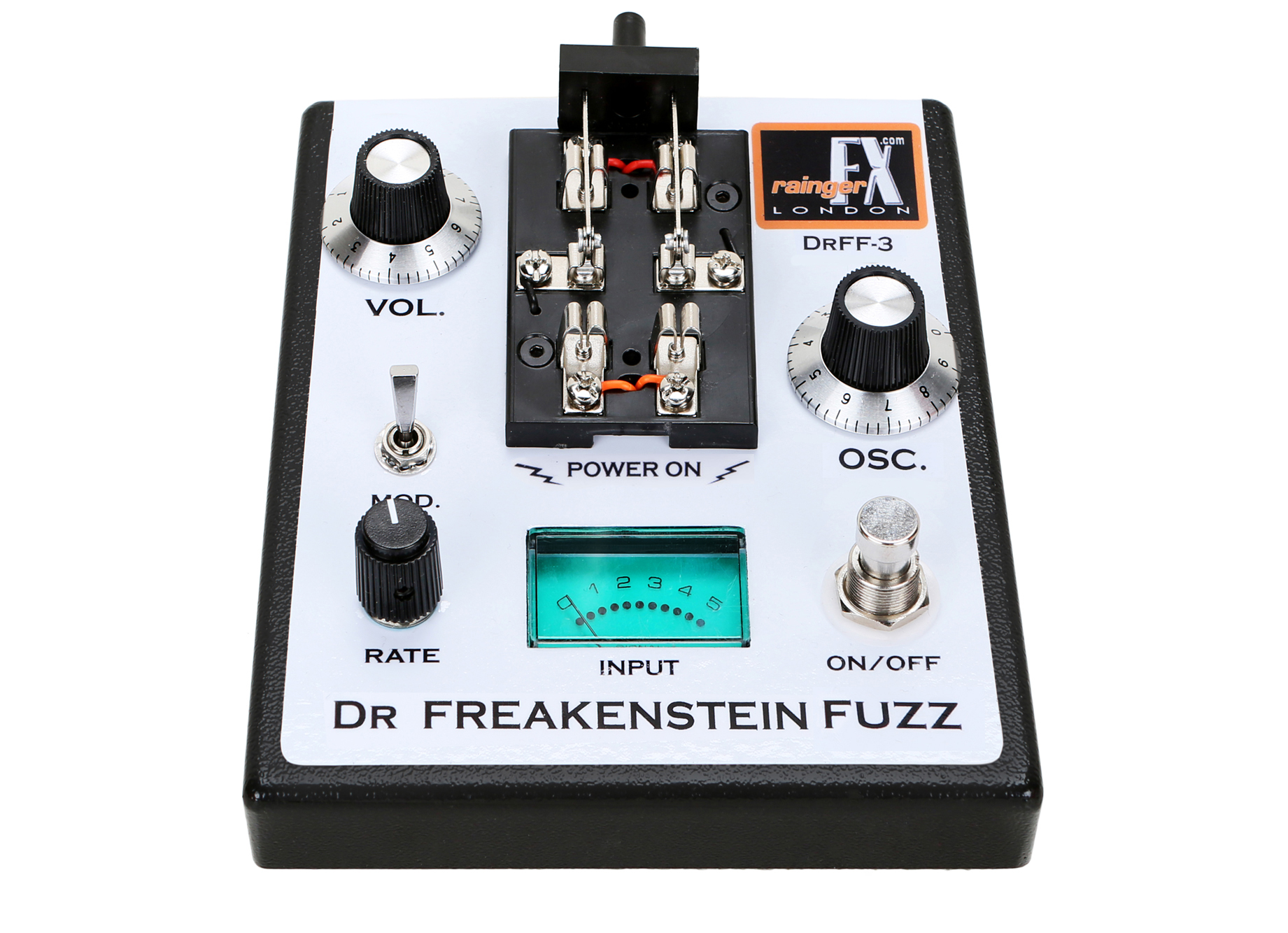 Rainger FX DRFF-3
Rainger FX DRFF-3
Founded by David Rainger in 2009, Rainger FX hit the ground running with their Dr. Freakenstein—a sputtery, monstrous fuzz pedal with a sound and look unlike any other. Though the design morphed a bit over the years, the Tonebender-inspired core of the pedal remained the same, but simply pushed to the sonic limit. And in fact, Rainger FX later went on to collaborate with Colorsound to produce a truly super-charged Tonebender. Dubbed the Freakenbender, the Gain control covers the range of classic and iconic sounds, but seamlessly switches over to Freakenstein-style sounds at its maximum. There have been plenty of other Rainger FX distortion and fuzz boxes along the way, too: El Distorto, Bleep, and the one-of-a kind Minibar liquid analyzer.
But don't get the impression that distortion is all that Rainger FX has to offer—far from it! Tiny DSP-powered effects like Reverb-X and Echo-X put a Rainger-flavored spin on time-based effects to warp your sounds into other dimensions. There's also self-accompanying pedals that blur the lines between effect and instrument, like the synth-packed Drone Rainger and mini drum machine Snare Trap. And we'd be remiss if we didn't mention to little guy bundled in with many of the Rainger FX pedals: Igor. The adventurous nature of many Rainger FX designs benefits from real-time control, but rather than weigh down your pedalboard with tons of expression pedals, Igor is a handy little pressure-sensitive pad that more than gets the job done.
If it's not clear after reading the above, Rainger FX isn't content with rehashing tired sounds, but rather putting a unique spin on various types of effects that would put a smile on any sonic adventurer's face.
Break Box Overview
So, now that the history lesson is out of the way: what does the Rainger FX Break Box do? Put simply, it combines wide-range distortion, fade-in chorus for sustained notes, and a highly-original "vinyl scratch" effect. This sounds simple (and kind of gimmicky) on paper, but in practice it's a combination of effects that can easily lead you to some interesting musical places—especially outside of the context of a guitar or bass.
Let's start with the distortion circuit, which is itself a sort-of Rainger mash-up. Per Rainger FX themselves, this is an enhanced version of the El Distorto mashed together with a Tonebender, making for a unique, full frequency range distortion with tons of gain. Its wide spectrum is crucial for versatility with instruments beyond guitar and bass—the extreme timbres that drum machines and synthesizers can create often reveal the spectral weaknesses of classic guitar-centric circuits.
One of the other effects lurking within the Break Box is the sustained chorus effect, which intuitively starts to fade in while notes are sustained. This means that while you're shredding some fast lead licks or layering percussion with pads or drones, the chorus effect won't turn your transients and note definition to mush. To dial in your preferred flavor of chorus, there's a Chorus Speed control on the front that ranges from subtle to woozy.
Finally, we gotta talk about the big black circle pad which activates the Break Box's vinyl scratch effect. Now before you run away in fear of sounding like Limp Bizkit, Deftones, or Incubus—just hear us out. This isn't simply a triggered sample, but Break Box is actually synthesizing a vinyl-like sweep as your signal is ducked out. And with the push button on the back, you can enable dynamics detection which responds to your playing. Alternatively, leave the pedal in manual mode and it can be an easily activated performance feature alongside your desktop synths or drum machines.
Scratch That
Break Box clearly isn't your average effect pedal, and that fits perfectly in line with the other offerings from Rainger FX. Its extra features might not be for everyone, but Break Box is a shining example of Rainger FX's dedication to doing something different, unique, and fun. And, nu metal jokes and memes among our staff aside, we can't deny that the Break Box is a really fun pedal to play with, even beyond guitar and bass. Without a doubt, Break Box is another effect that we'll file under the category of "weird but lovably fun" along with every other Rainger FX pedal.

